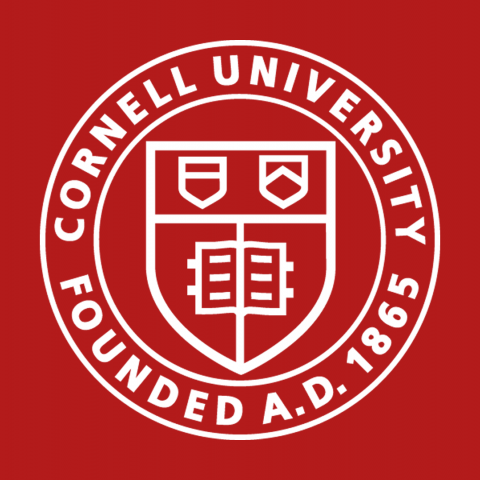Date: 9/1/2022 Speaker: Farrell Helbling Location: 122 Gates Hall and Zoom Time: 2:40 pm-3:30 pm Abstract: Countless science fiction works have set our expectations...
Tapomayukh Bhattacharjee and Sanjiban Choudhury 8/25/2022 Location: 122 Gates Hall Time: 2:40pm Hey everyone! Welcome back for the semester The first seminar is just...
Michael Suguitan 12/6/21 Location: 310 Gates Hall Time: 11 am Abstract: Robots will not soon be entering our lives, particularly in social capacities, largely due to...
Vasileios Vasilopoulos 12/2/21 Location: 122 Gates Hall Time: 2:40pm Abstract: Unlike the problem of safe task and motion planning in a completely known environment, the...
Karthik Desingh 11/18/21 Location: 122 Gates Hall Time: 2:40pm Abstract: A crucial question for complex multi-step robotic tasks is how to represent relationships...
Paul Schmitt 11/11/2021 Location: 122 Gates Hall Time: 2:40pm Abstract: Imagine this You’re walking down a street in a busy city and, as you’re about to cross the...
Sanjeev Koppal, University of Florida 11/4/2021 Location: 122 Gates Hall Time: 2:40pm Abstract: Most cameras today capture images without considering scene content In...
Maria Bauza Villalonga, MIT 10/28/2021 Location: 122 Gates Hall Time: 2:40pm Abstract: Reliable robots must understand their environment and act on it with precision...
Micah Corah, NASA Jet Propulsion Laboratory 10/21/2021 Location: 122 Gates Hall Time: 2:40pm Abstract: Processes of observing unknown and uncertain objects and...
Gina Olson, Carnegie Mellon University 10/14/2021 Location: 122 Gates Hall Time: 2:40pm Abstract: Soft robots use geometric and material deformation to absorb impacts,...
Yash Chitalia, Harvard Medical School and Boston Children’s Hospital 10/7/2021 Location: 122 Gates Hall Time: 2:40pm Abstract: Manual manipulation of passive surgical...
Jonathan Chang, David Goedicke, Natalie Friedman, Travers Rhodes, PhD students, Cornell Tech 9/30/2021 Location: 122 Gates Hall Time: 2:40pm Abstracts: Jonathan...
Cornell Robotics Grad Students 9/23/2021 Location: 122 Gates Hall Time: 2:40pm Abstract: Join RGSO for our first homegrown seminar: a discussion on tooling We have a few...

Certifiable Outlier-Robust Geometric Perception: Robots that See through the Clutter with Confidence
Heng Yang, Massachusetts Institute of Technology 9/16/2021 Location: 122 Gates Hall Time: 2:40pm Abstract: Geometric perception is the task of estimating geometric...
Christoforos Mavrogiannis, University of Washington 9/9/2021 Location: 122 Gates Hall Time: 2:40pm Abstract: Pedestrian scenes pose great challenges for robots due to...
Tapomayukh Bhattacharjee and Claire Liang 9/2/2021 Location: 122 Gates Hall Time: 2:40pm Hey everyone! Welcome back for the semester Robotics seminar is starting a new...
3/10/2020 Location: Upson 106 Conference Room Next to the Lounge Time: 2:55pm Abstract: Although the majority of the human diet stems from staple grains, approximately...
Guy Hoffman, Cornell University 2/18/2020 Location: Upson 106 Conference Room Next to the Lounge Time: 2:45pm Abstract: How does one write a good academic paper What...
12/10/2019 Location: Upson 106 Conference Room Next to the Lounge Time: 3:00pm Abstract: Modular self-reconfigurable robots are typically composed of homogeneous units...
Alberto Quattrini Li, Dartmouth College 12/3/2019 Location: Upson 106 Conference Room Next to the Lounge Time: 3:00pm Abstract: How can robots effectively explore,...
Yasser Shoukry, University of California - Irvine 11/26/2019 Location: Upson 106 Conference Room Next to the Lounge Time: 3:00pm Abstract: From simple logical...
Deanna Kocher and Ross Knepper 11/19/19 Location: Upson 106 Conference Room Next to the Lounge Time: 3:00pm Abstract: With creative license, science fiction envisions...
11/5/2019 Location: Upson 106 Conference Room Next to the Lounge Time: 3:00pm Abstract: Collaboration opportunities abound in robotics Today, we will do an activity to...
Guy Hoffman, Cornell University 10/29/2019 Location: Upson 106 Conference Room Next to the Lounge Time: 3:00pm Abstract: As we continue to develop social robots...

Robots, Language, and Human Environments: Approaches to Modeling Linguistic Human-Robot Interactions
Cynthia Matuszek, University of Maryland 10/22/2019 Location: Upson 106 Conference Room Next to the Lounge Time: 3:00pm Abstract: As robots move from labs and...
A conversation with Keith Green, Cornell DEA/MAE, and Chajoong Kim, Cornell Visiting Professor 10/8/2019 Location: Upson 106 Conference Room Next to the Lounge Time:...
Robert Shepherd, Cornell University 10/1/2019 Location: Upson 106 Conference Room Next to the Lounge Time: 3:00pm Abstract: The robotics community has been more...
Yoav Matia, Technion 9/24/2019 Location: Upson 106 Conference Room Next to the Lounge Time: 3:00pm Abstract: In this work we analyze the transient dynamics of...
Yoav Artzi, Cornell Tech 9/10/19 Location: Upson 106 Conference Room Next to the Lounge Time: 3:00pm Abstract: The problem of mapping natural language instruction to...
Tesca Fitzgerald, Georgia Tech 9/3/2019 Location: Upson 106 Conference Room Next to the Lounge Time: 3:00pm Abstract: Adaptability is an essential skill in human...
